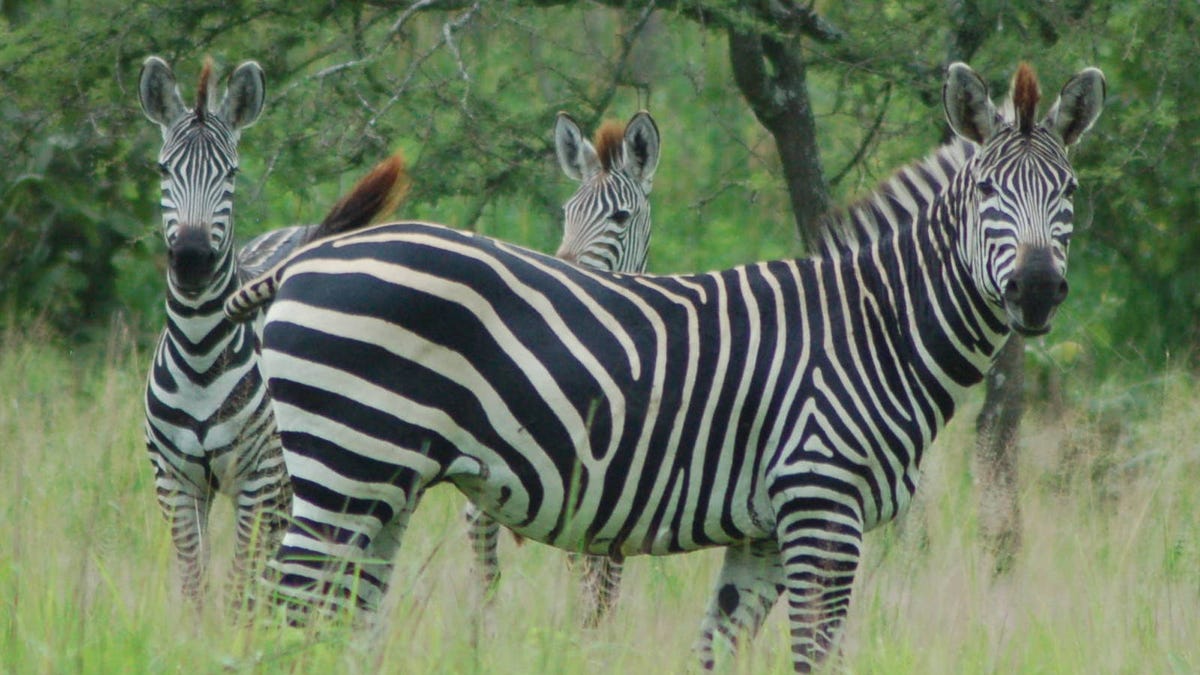Zebra stripes as camouflage? Not so fast, Mr. Hyena
Zebras may not be nearly as sneaky as some people thought. A study casts doubt on the idea that those magnificent stripes are used to hide the horse-like creatures from predators.
Many wild animals have developed special camouflage characteristics to blend in with their surroundings. Rattlesnakes look like pebbly soil. Owls become one with the tree branches on which they perch. Zebra stripes meld with tall grasses and trees. Oh wait. We may need to scratch that last one from the list. A new study suggests zebra stripes aren't about camouflage at all.
The study looks at zebra stripes from the perspective of predators as well as fellow zebras. "The most longstanding hypothesis for zebra striping is crypsis, or camouflaging, but until now the question has always been framed through human eyes," says lead author Amanda Melin from the University of Calgary.
The researchers calculated the distances at which lions and spotted hyenas can see zebra stripes under various light conditions. "At the point at which predators can see zebras stripes, they probably already have heard or smelled their zebra prey," notes UC Davis in a release on the findings.
"The results from this new study provide no support at all for the idea that the zebra's stripes provide some type of anti-predator camouflaging effect," says Tim Caro, professor of wildlife biology at UC Davis and co-author of the study.
The study, titled "Zebra Stripes through the Eyes of Their Predators, Zebras, and Humans," was published in the PLOS One journal on January 22.
There have been many theories of why zebras have stripes. Camouflage has been a popular concept, but some researchers have suggested the stripes help zebras identify each other. Closely related animals like horses, however, can recognize each other without stripes, casting some doubt on that idea.
If a zebra's stripes aren't about blending in, then what are they for? The scientists suggest they may have something to do with discouraging biting flies from feasting on the animals. An earlier study from 2014 looks at how biting flies avoid striped surfaces and how those striped zebra coats can be a turn-off to the pests. That certainly sounds like a good reason to evolve stripes.


